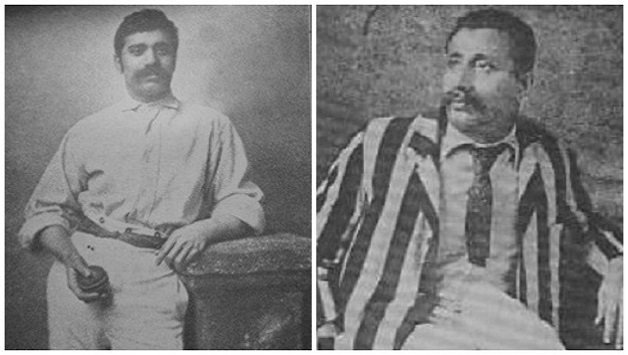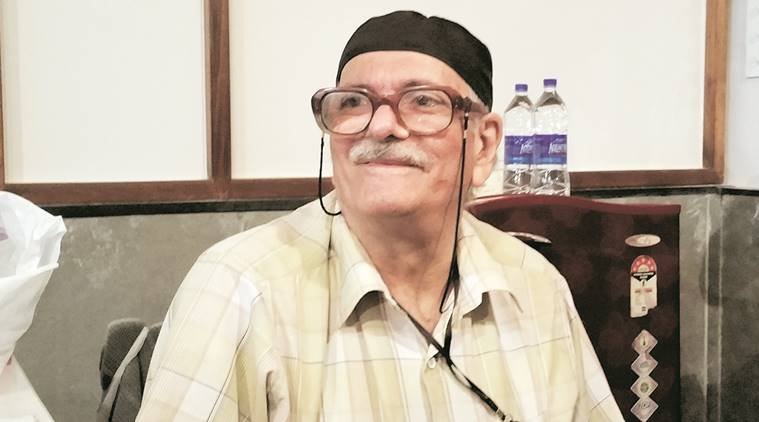Lobsters in Cricket: The Parsee Connection

While lob bowling was undergoing a revival in England aided by Walter Humphreys, the Parsee team that visited the country in 1886 did have a few decent bowlers of that type. Arunabha Sengupta looks back at some of these men who achieved a fair amount of success in an otherwise dismal tour.
Through the 1870s, lob bowling had become sufficiently rare to evoke comments when observed in abundance.
For example, in July 1873 Baily’s Magazine reported the following about a match between the Gentlemen of the South and the Players of the North: “We had the singular spectacle at one part of the game of an under-hand bowler at each end in a First-Class match.”
The match in question was played on June 5, at Prince’s Cricket Ground, Chelsea, and the two bowlers in question were Arthur Ridley and EM Grace. Ridley picked up 7 in the match, EM 2, but the Gentlemen of the South lost by 111 runs despite WG Grace’s magnificent 145 in the first innings.
By the 1880s, thanks to the great Walter Humphreys, the lobster was making a spirited comeback into the arena. Yet, the sight of lob bowlers bowling in tandem was odd enough to be noteworthy.
And so was it with the first Indian cricket side to visit the shores of England. When the Parsees of 1886 started their tour against Lord Sheffield’s XI, it was quite a sight to witness three of the five bowlers used operating underhand.
The Parsee tour
The visiting players from the Orient were met with princely reception from that genial patron of sports, Earl Sheffield. There was a lunch during which the Earl made kind enquiries of all the members of the team through the captain Dr DH Patel.
Thereafter, as a further act of hospitality, the great Alfred Shaw took part in the match but did not bowl. The weather was kind as well. Persistent rain prevented the visitors from being bowled out twice and thus starting off with a defeat.
The hosts batted first and the Parsee bowling was opened by Shapoor Bhedwar, an underhand medium fast bowler with a peculiar delivery and a formidable off-break. It was this excellent man who drew first blood for the tourists.
From the other end it was the overarm bowler Muncherjee Framjee, whose length and variations impressed the English judges of the game.
DD Khambatta, a member of the small group of Karachi men who had reinforced the Parsee side, was the next bowler to be used. He bowled left-arm, overhand and fast, and troubled experienced batsmen. A left-arm fast bowler hailing from present-day Pakistan. Evokes some romantic images, does it not?
And then the captain himself came on. Patel was an underarm fast bowler who would have a fairly decent time with the ball on the tour.
The scorecards found in CricketArchive and other sources tell us that they were the only four bowlers to turn their arms over (or to push their arms through). However, the report in the May 27, 1886, issue of Cricket says that five of the team bowled, the other man being Jal Merwanjee Morenas. Morenas, an amiable man and a respected bat, was an occasional bowler who bowled slow lobs. It is definitely possible that he did bowl that day but was not listed in those early scorecards jotted down during a non-First-Class match.
Apart from these three, ME Pavri’s book on Parsee cricket lists Bomonjee Byramjee Baria, another man on the tour, as a slow and tactful underarm bowler.
That day Framjee and Khambatta accounted for 7 wickets between them, but Bhedwar claimed 2 and Patel bowled Shaw to end the innings for 142. Hence, lobsters had struck for the Parsees.
After that, however, it was a tale of struggle for the batsmen. They were rolled over for 42 in the first innings and were 53 for 4 in the second when rain brought the match to an early conclusion. One of the bowlers they struggled against was Humphreys the lobster.
The following match was against MCC, by far the strongest outfit to take on this motley group of visitors and the closest Patel’s men got to facing a representative side on that tour.
The match was not First-Class. In fact, there would be no First-Class match on the tour. However, WG Grace himself opened the innings for MCC. Alongside him was the lob-bowling all-rounder ID Walker, brother of the great lobster VE Walker.
The two put on 119 for the first wicket, and according to Gerald Brodribb the opening bowlers of the Parsees were both underarm. So, it was perhaps Bhedwar and Patel who opened the bowling that day.
However, it was the slow bowling of Ardeshir Cursetjee Major, the fifth bowler to be used, that finally earned the visitors some success. Major took 5 wickets, with the lobsters managing 3 between themselves. But the score of 313 was in any case way beyond the abilities of the Parsee batsmen.
Grace took 7 for 18 with his cunning round arm deliveries as the Parsees folded for 23 in the first innings. In the second, Walker opened the bowling with Grace and picked up 5 for 28. Grace had to be satisfied with 4 for 26. The Parsees did a bit better in the second knock, managing 66. Morenas even hit WG for 3 boundaries.
Thus, this match saw the spectacle of three lob bowlers operating with the new ball.
The tour was a sorry tale of such defeats. WG did not quite mince his words when he summarised, “During the season a team of Parsee cricketers paid us a visit, but met with very little success, even against second and third-rate clubs.”
However, the team was not really expected to do much better. According to JM Framjee Patel, “They [the cricketers] returned sadder but wiser men.”
The three-week coaching by Surrey Professional Robert Henderson did not really suffice in making the side ready to face the far more experienced cricketers of England. One publication noted, “It was a great pity that the Parsees could not succeed in finding any single eleven weak enough to play a proper game with them.”In any case, it was an epochal and extremely important tour in the history of the game.
The Parsees played 28 matches, won a single encounter against Normanhurst at the seat of Lord Brassey, drew 8 and lost 19.
Yet, there were significant performances, mostly in the bowling department. Framjee, the overarm star, headed the list of wicket taker with 79 at 26.56. Khambatta, the left-arm paceman from Karachi, was the next most successful bowler on the tour, capturing 75 wickets at 22.74.
However, heading the bowling averages was the underarm medium pacer Bhedwar with 59 wickets at 19.57. When he captured 6 for 27 at Ashton-under-Lyne, a report read: “The wonderful bowling of Mr Bhedwar was the chief feature of the game.” At Chiswick Park he ran through the batting with 7 for 26, and that included a hat-trick.
As for the captain, Patel was exemplary with his performances all through. He got his runs at 15.30 and picked up 16 wickets at 24.40. His fast underarm bowling lost its incisiveness on good wickets, but he was handy throughout and successful on occasions.
After the tour, Patel stayed back in England to pursue his medical studies. On his return to India, he became a successful medical practitioner in Bombay.
Bhedwar, the other underarm stalwart, had an equally fascinating career after cricket.
He made a name for himself as an artistic photographer of proven class. Later, he arranged displays of his collection, ‘Feast of Roses’, in various exhibitions in England, winning the gold medal on several occasions. He set up a thriving business as the Parsee photo artist in Bombay. Pioneer paid him the compliment of being ‘one of the foremost sons of India’ in the realms of art.
Note: When the Parsees toured again in 1888, Dhanji Mehta was listed as their only lob bowler. He did little bowling on the tour.





